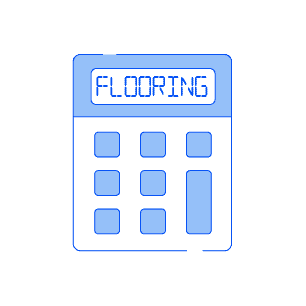Captain’s Cork Highlights


- Cork is one of the most unique floors. You see carpet, hardwood, hardwood-imitators, and tile in most homes. How often have you seen cork?
- Although it’s not popular, cork can be a durable and overall great floor for many homeowners
- Cork is a top eco-friendly choice of flooring
- Cork doesn’t have as many “durability specifications” as other floors, but there are a few “tests” you can do to get a gauge of the cork’s quality
- You’ll have to choose water or oil-based finish, water-based is best for most homeowners
- Cork is one of the easier floors to DIY (but make sure to get floating cork)
Chapter 1: Cork pros and cons. Is it the best floor for your room?
Flooring is a big investment, so it makes sense to review the pros and cons of any floor you buy before you throw down the money.
Here are some of cork’s advantages:
- likely none of your friends or neighbors have it
- its appearance is versatile and can be “man cave” cool or library “classic”
- extremely good sound (foot and voice) insulator
- good room temperature insulation
- good for allergies due to natural antimicrobial and hypoallergenic properties
- cork industry is extremely eco-friendly (it is made from bark and they do so in such a way it doesn’t damage the tree) and it easily recyclable
- soft underfoot
- can be sanded down and refinished to make it last for decades
Here are some of cork’s disadvantages:
- fades in direct sunlight
- can dent under heavy furniture (similar to carpet)
- big weather (temperature and humidity) changes can cause warping of the installation so best to avoid in indoor/outdoor rooms, garages etc
- requires some maintenance of refinishing likely every few years depending on the level of scratches
- water and cork don’t mix; the finish can help prevent this but not recommended in a room with a moisture problem or bathroom
Hopefully, that’s helped you confirm whether or not cork is for you. If you still have questions or wonder how cork compares to other floors, let me know in the comments below.
Chapter 2: Cost of cork
Cork is a mid-level floor as far as cost. Quality comes into play on price, but expect to pay around $4 per square foot. Add a dollar or two for installation including any extra materials or finishing needed for a total cost of about $6 per square foot installed.
Want a quick estimate on your cork flooring cost by answering just 3 questions? Check out our free flooring cost calculator.
Chapter 3: How to pick out a durable cork floor
All cork comes from the bark of a tree, but not all cork is created equal.
The quality of cork you buy will determine how long it looks new. The challenge with cork is it doesn’t have too many specifications you can look at. You have to do a little of the investigations yourself.
So what can you do and look at to determine you’ve got a quality cork floor?
Cork density
Density is one measurement of cork flooring you can sometimes get an answer to, and it’s easy to compare numbers.
Usually, you’ll want a cork floor that is at least 30lbs per cubic foot. However, this can vary by the type of cork floor. Floating cork has multiple “sections” each with a different density; sometimes you’ll see 3 densities listed. The 30lbs per cubic foot is a good goal for the top layer, but don’t be thrown off if the lower layers are less dense because these are more for insulation and less dense (more air pockets) can be an advantage for insulation.For glue-down cork, the 30lbs per cubic foot holds true because glue down cork has the same density throughout the plank.
You won’t always find density ratings but usually can if you contact the manufacturer directly. Sometimes it’s easier just to take a sample of the floor and test your floor yourself, which we’ll cover next:
Indentation recovery and other tests
Like durability, sometimes you can investigate and find number related to indentation recovery. If it’s listed, it should include 3 numbers: the force used to indent the floor, the percentage of the thickness of the floor that it indented, and then the percentage the floor was still indented after a period of time where the pressure was stopped (the recovery period).
There are no standards here, so your only option is to compare floors that give you the exact same pressure measurements, and this often won’t happen.
This lack of universal information to determine durability is a common theme with cork, which is why it may be best to take a sample and test for yourself.
Here are some tests you can do (note: you have to take home sample of each piece of cork you like to test):
Indentation test: In this test, you’ll apply pressure to cork and see how it responds. You can put the pressure on the cork yourself, but I like to use a piece of furniture. The reason is the furniture pressure will be equal between each piece of cork tested. In example, lift up a couch, slide the cork under the couch, then let it sit for a specific amount of time (say 10 minutes). Immediately measure how much the cork is indented (you can use different techniques here but it’s pretty easy to use a ruler and see how many millimeters the highest point of the cork is vs the indentation. Then, time out a specific amount of time (say 10 more minutes) and re-measure the cork indentation.
What to look for:Both measurements are important. The initial indentation gives you an idea of how resilient your cork will be to weight, but how much the cork recovers is more important (aka its final indentation amount).
Scratch test: In this tests, you’ll scratch each sample of cork. I find this more difficult to get a standard, but you can usually get a pretty good idea by just taking a nail or other sharp object and scraping it across the cork. Try to use equal force between two samples.
What to look for:More scratches = less durable. Pretty simple. However, keep in mind that much of scratch resistance is due to its finish, and you can apply a new finish to cork. Ideally, you get a more scratch-resistant cork out of the box, but this is less important than the indentation test.
Water test: We talked about cork not being great with water, but at some point, waters going to hit your floor. Even humidity can make a difference. If your floors not in a kitchen, basement, or slab, this may be less important. But in any of these situations, I’d definitely test it out. All you need to do is take a cork sample and set it in water.
What to look for:You’re simply looking for less swelling and changes in the cork. Keep in mind, much of cork water resistant comes from how it is sealed together (water damaged comes from getting between cork boards because the finish prevents water from seeping in. If you really want to test the water resistance, you’ll need a few samples and “install” them together and then put water on top to see if it can penetrate the finish or edges of the floor.
Cork finishes
Like hardwood, cork is “finished” with…well.. a finish. Multiple layers of finish are applied to the top of the cork, and you can’t do without it if you want it to last.
Just having a finish isn’t enough. The type and number of layers is important. Fortunately, most cork floors use a polyurethane finish which is a very effective finish. Here are the 3 types of finish you’ll find.
Polyurethane finish is the most popular, and fortunately, it also does a great job. You’ll get to choose between two types: oil and water-based.
Water vs Oil-based Cork Finish
| Water-based | Oil-based | |
|---|---|---|
| Cost | $45 per gallon | $30 per gallon |
| Ease of application | easier to apply | little more difficult |
| Dry time per coat | ~2 hours | ~5 hours |
| Appearance | clear to light tint | darker or amber tint |
| Coats needed | 3 to 5 | 2 to 4 |
| Odor | less odor | strong/offensive for 48hrs+ |
| Durability | good | good |
I put durability last for a reason: it’s debatable. Oil-based used to always be considered more durable. With new technology, water has caught up for the most part. Some people even claim water is more durable.
I recommend pretty much everyone go with water-based poly. It’s easy to use, less odor, and more natural appearance are all big wins for me. That said, if cost is a big issue or some people like the tint/”glow” of oil-based, it’s still a great choice. Just plan on ventilating and being out of the house for a couple of days.
Wax-based finish is inferior to polyurethane. There’s no point in beating around the bush. That said, some people like the finish appearance of wax. Just know this, you’ll have to refinish wax more often, it’s not as durable (although it can be if you apply frequently), and it is more difficult to apply. One advantage of wax, you can refinish or buff a single area without having to redo the entire floor like you would with polyurethane.
Acrylic urethane I’ve seen mixed information on the web. However, it’s my understanding that acrylic is water-based polyurethane (see above). Potentially, there is a slight difference, but I think for homeowner purposes I’d consider it in the same category.
Thickness
Some floors’ thickness directly correlates to durability. This isn’t the case with cork. I’d go with a durability of at least 4mm. Thicker won’t make your floor last longer, but it will amplify some of the other benefits of cork: insulation and comfort. This is especially true for insulation. If you want sound or weather insulation, go with a thicker cork.
Chapter 4: Color impact on durability
Almost every type of floor color actually makes some difference in durability. The most noticeable is bamboo flooring where darker colors actually weaken the product. Lesser examples are carpet where mixed colored carpet do better to hide age-related dirt stains.
Cork falls in the camp of color doesn’t matter too much. However, there is one time where you want to consider the cork color: when its exposed to frequent sunlight. In these cases, I’d go with a light cork floor because it’s less likely to have a noticeable fade from the sun.
Chapter 5: DIY, installation tips, and hiring an installer
You’ve picked out a cork floor you’ll love, now what do you do for installation?
Could you save money and install it yourself? Or should you fork up the cash for an installer, and if so, how do you know he’s a good installer?
Can you install cork yourself?
DIY projects not only save you a good amount of money (often $500+ depending on the job), but it also gives you a sense of satisfaction pulling it off.
The good news is cork definitely can be a DIY job. In fact, “floating” cork floors are one of the easiest DIY flooring jobs.
Half the battle of installing cork isthe preparation:
- Is cork the right floor for the room?
- Am I picking the best cork floor for my situation?
You’ve already got the answer to these questions from earlier in the guide (and if not, just take 10 minutes to re-read and get the planning down). After that, there are a few other important tips to keep in mind…
Installation tips (even if you’re hiring an installer)
These tips are important even if you’re hiring an installer. Why? It helps you make sure everything is done right. This are critical points in the floor installation, and no one cares more about the outcome of your floor than you.
- Floating floors are much easier to install than glue down cork floors. Both are a DIY job, but floating floors basically involve a little measuring and then clicking planks together. Glue down measurements are more important, it’s a messier job, and there’s less error for not placing plank down perfectly the first time (because now they’re stuck!). If you’re a first-time DIY’er, do yourself a favor and go with floating cork
- Mostcork floors don’t need underlayment.This is another win for installation because it’s one less layer to worry about. Most cork has a less dense lower layer that acts as a built-in underlayment. However, it’s important to double-check this. Also, if moisture might be a problem, you might want to add a moisture barrier under your cork floor (although, I’d probably just avoid cork altogether).
- You have to acclimate your flooring for at least 48 hours, and I recommend closer to 7 days.What do I mean by “acclimate?” Sit your flooring out in your home. And not just “out” in your home bunch up. Spread it out so most of the surface of the cork is in contact with the air. This process greatly limits the chance your cork changes shape after installation, which can be a disaster.
- Leave about 1/2″ between the cork and the wall. This is the critical expansion gap that still allows room for some expansion of the cork floor.
 I prefer floating floors because of their ease of installation. However, if you suspect you might have any moisture problem, the glue down planks will be your best bet. Click-together/floating cork planks’ weakness is at the seams–water can seep in. This isn’t a problem with the glue-down tiles.
I prefer floating floors because of their ease of installation. However, if you suspect you might have any moisture problem, the glue down planks will be your best bet. Click-together/floating cork planks’ weakness is at the seams–water can seep in. This isn’t a problem with the glue-down tiles.Chapter 6: How to get the best deal on cork
You’re seeing the light at the end of the tunnel. You know what you want. You know how to get it installed. Now, you just have to buy it.
First things first, where can you buy cork floors? Really, about any decent size floor store. Since it’s one of the less popular floors, you might not get an amazing selection at every store you visit, but other than that, our article on pros and cons of where to buy flooring holds true.
I’d also recommend checking out our articles on negotiating flooring to get the best deal and the best times to buy flooring.
If you have an idea of what you want and don’t need much hand-holding, cork is actually a pretty good floor to buy online. It’s DIY and there isn’t much needed in the way of specialty construction pieces or tools. Builddirect and Home Depot have good selections you can check out.
Captain’s parting words!
Cork’s a stand out floor that won’t work for every person or every room, but that’s what makes it different.
Add to that, it’s one of the most eco-friendly floors and easy to DIY, and I’m surprised corks not more popular.
Some of it could be confusion about buying cork. It doesn’t have as many straightforward specifications, but hopefully, with the information and at-home tests you learned in this article, you can pick a cork that’s perfect for you.
Any questions on cork flooring? Let me know in the comments below.








Can infloor heat be used with cork? We’re looking at electric infloor for minimal subfloor depth. We’re DIY. Any tips for cork selection and install with infloor heat? Or would hardwood be better for infloor?
Thanks!
Surprisingly (at least to me), cork can be used with radiant heat like infloor. Cork is naturally insulating, so it likely makes the heating process less efficient, and it will definitely make it slower. Up to you how important that is, but I would probably go for something else (or depending on your situation, the cork floor may give you the warmth underfoot you need naturally and you could do without radiant heat).